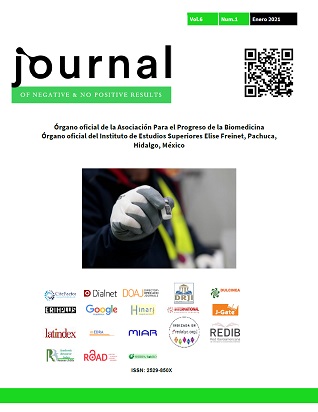Effect of full body electrostimulation training (WB-EMS) on neuromuscular adaptations in untrained individuals - Randomized clinical trial, study protocol
DOI:
https://doi.org/10.19230/jonnpr.3199Keywords:
WB-EMS, Physical condition, Training, StrengthAbstract
Introduction. Electrostimulation is a method of training used in sports that has been shown to be effective in improving strength manifestations such muscle power. Currently, there is no known scientific literature in which a training program with electrostimulation suit is applied. Therefore, the aim of this study is to carry out a program to see the effects on neuromuscular adaptations in untrained subjects.
Objective. to study the neuronal and muscular adaptations that occur in the active electrostimulation training applied with a full body suit on the extensor muscles of the arms and extensors of the leg.
Material and methods. A randomized controlled study between groups. The experimental design of the study will allow us to analyze the neuromuscular adaptations that occur with the electrostimulation training applied with a full body suit and compare them to those of a traditional strength training. The dependent variables measured will be: electromyography activity in maximum isometric force test, maximum force value, force production rate, neural adaptation indicators. The program will be carried out during 24 sessions, twice a week, for 12 weeks.
Expected results. We expect to achieve greater neuromuscular activation with the combination of electrostimulation applied with full body suit. Regardless of the results obtained, the final study will be published.
Downloads
References
Filipovic A, Kleinoder H, Dormann U, Mester J. Electromyostimulation--a systematic review of the effects of different electromyostimulation methods on selected strength parameters in trained and elite athletes. J Strength Cond Res 2012; 26(9): 2600-14.
Filipovic A, Grau M, Kleinoder H, Zimmer P, Hollmann W, Bloch W. Effects of a Whole-Body Electrostimulation Program on Strength, Sprinting, Jumping, and Kicking Capacity in Elite Soccer Players. J Sports Sci Med 2016; 15(4): 639-48.
Maffiuletti NA, Cometti G, Amiridis IG, Martin A, Pousson M, Chatard JC. The effects of electromyostimulation training and basketball practice on muscle strength and jumping ability. Int J Sports Med 2000; 21(6): 437-43.
Malatesta D, Cattaneo F, Dugnani S, Maffiuletti NA. Effects of electromyostimulation training and volleyball practice on jumping ability. J Strength Cond Res 2003; 17(3): 573-9.
Martin L, Cometti G, Pousson M, Morlon B. Effect of electrical stimulation training on the contractile characteristics of the triceps surae muscle. Eur J Appl Physiol Occup Physiol 1993; 67(5): 457-61.
Gondin J, Guette M, Ballay Y, Martin A. Electromyostimulation training effects on neural drive and muscle architecture. Med Sci Sports Exerc 2005; 37(8): 1291-9.
Conceicao A, Silva AJ, Barbosa T, Karsai I, Louro H. Neuromuscular Fatigue during 200 M Breaststroke. Journal of Sports Science and Medicine 2014; 13(1): 200-10.
De Luca CJ. The use of surface electromyography in biomechanics. Journal of Applied Biomechanics 1997; 13(2): 135-63.
Borg G. RATINGS OF PERCEIVED EXERTION AND HEART-RATES DURING SHORT-TERM CYCLE EXERCISE AND THEIR USE IN A NEW CYCLING STRENGTH TEST. International Journal of Sports Medicine 1982; 3(3): 153-8.
Ortega FB, Ruiz JR, Espana-Romero V, et al. The International Fitness Scale (IFIS): usefulness of self-reported fitness in youth. International Journal of Epidemiology 2011; 40(3): 701-11.
Published
Issue
Section
License
All accepted originals remain the property of JONNPR. In the event of publication, the authors exclusively transfer their rights of reproduction, distribution, translation and public communication (by any sound, audiovisual or electronic medium or format) of their work. To do so, the authors shall sign a letter transferring these rights when sending the paper via the online manuscript management system.
The articles published in the journal are freely used under the terms of the Creative Commons BY NC SA license, therefore.
You are free to:
Share — copy and redistribute the material in any medium or format
Adapt — remix, transform, and build upon the material
The licensor cannot revoke these freedoms as long as you follow the license terms.
Under the following terms:
Attribution — You must give appropriate credit, provide a link to the license, and indicate if changes were made. You may do so in any reasonable manner, but not in any way that suggests the licensor endorses you or your use.
NonCommercial — You may not use the material for commercial purposes.
ShareAlike — If you remix, transform, or build upon the material, you must distribute your contributions under the same license as the original.
No additional restrictions — You may not apply legal terms or technological measures that legally restrict others from doing anything the license permits.

This work is licensed under a Creative Commons Attribution-NonCommercial-ShareAlike 4.0 International License

























